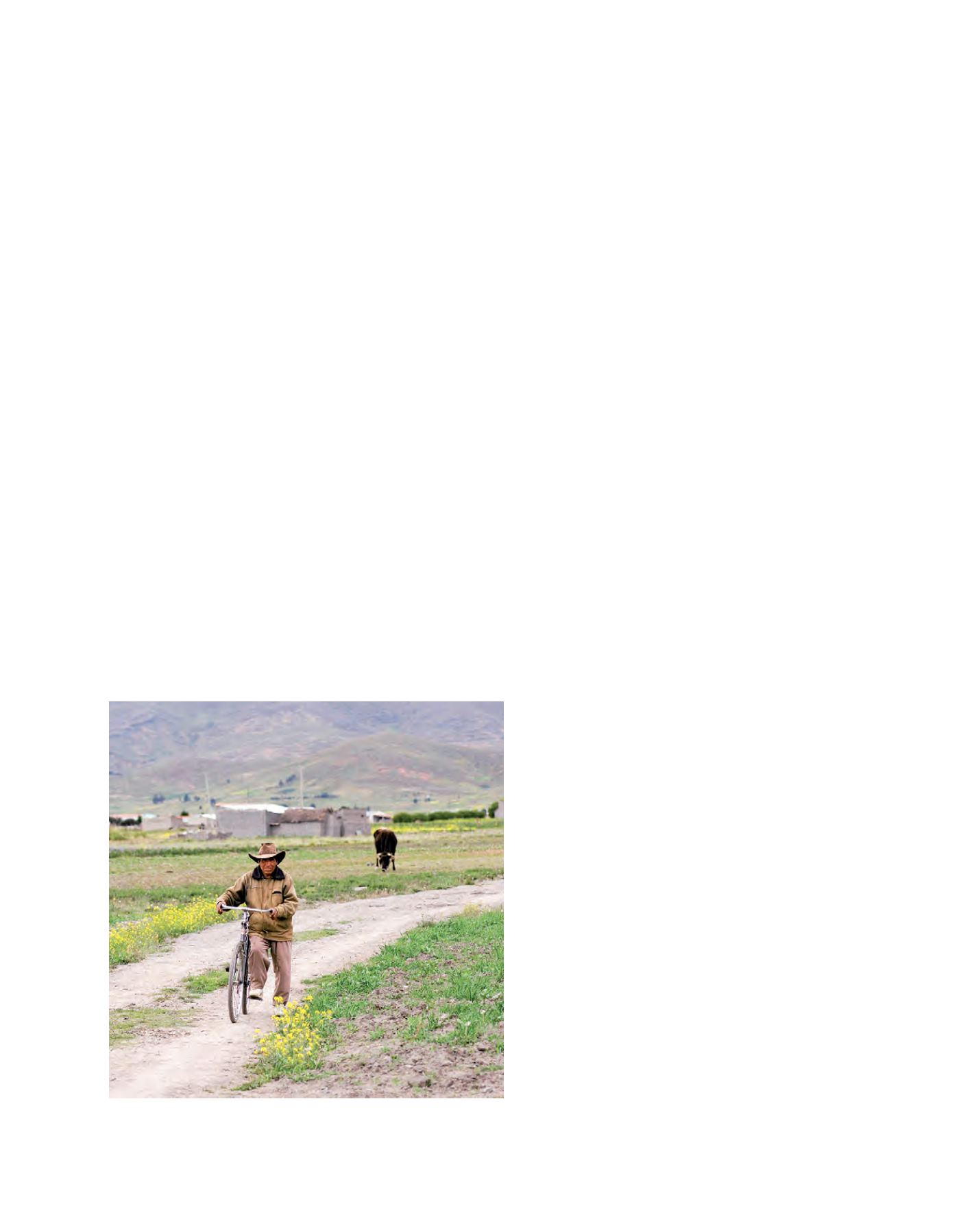

[
] 252
A
daptation
and
M
itigation
S
trategies
not want this debt to become entangled with the broken
promises and the charitable nature of official develop-
ment assistance.
Yet, perhaps the idea that adaptation and development all
but overlap will help governments keep in mind the truth
of Lord Nicholas Stern’s statement that: “Development and
climate change are the central problems of the 21st century.
If the world fails on either, it will fail on both. Climate
change undermines development. No deal on climate
change that stalls development will succeed.”
3
After visiting developing countries in Asia, Africa, and
Latin America – and in each case visiting villages and rural
areas – the Commission concluded that while climate
impacts may be huge, they will be experienced locally, by
individuals, families and villages. It is at this level that adap-
tive capacities and resilience must be increased.
This does not in any way decrease the role of the
national government; in fact it suggests that national
governments must be much better at connecting with
remote areas and peoples. Examples of how this is being
done are apparent in the partnerships with non-govern-
mental organizations (NGOs) and UN organizations.
There is also an alarming tendency in some countries
for national governments to decentralize responsibili-
ties to local communities – for running things like the
schools and health clinics – without decentralizing the
funds to do so, or seeing to it that local leaders were
trained for the tasks. This tendency increases, rather
than decreases, vulnerability.
Yet the instinct to rely on local people is correct, for
they have been managing climate variability for centuries
and have much pertinent knowledge and many necessary
skills. The Commission found that part of the Bolivian
government’s integrated response to climate change
involves systematically gathering material on the tradi-
tional strategies the country’s various different cultural
groups have used in coping with climate variability.
Development with risk management
Once one begins to see adaptation as development with
risk management, and view the development process from
a local angle, one can see how the various sectors of the
development process will need to be managed differently.
Take energy. No nation has developed economically
without increasing access to modern energy services.
Yet, energy access issues tend to be separated from
climate mitigation and adaptation issues.
Recent research has shown that the burning of biofu-
els such as firewood, crop residues and dung may be
more damaging to the climate than using a ‘modern’
carbon-based fuel like liquefied petroleum gas (LPG).
LPG is also healthier in that it causes less indoor air
pollution, its use does not tax forests or other ecosys-
tems and it does not have to be laboriously gathered and
hauled. Some governments have successfully encour-
aged shifts from firewood to LPG.
In terms of water management, systems need to be
improved at all administration levels. At the regional
level the focus should be on defining transboundary
patterns never seen before: too little rain one year, too much the
next. The Samoan fisherman sails on less predictable seas. The high-
land Bolivian farmer is threatened by malaria for the first time in
recorded human history.
Uncertainty increases vulnerability, especially for those whose
lives depend directly on natural systems. They need new software in
the forms of education, data and knowledge. They need democratic
governance and political voices to articulate views and concerns.
They need effective local governments connected to national govern-
ments. They need markets that work for them so that they can trade
and build their assets to tide them through illness, bad harvests and
the smaller, local disasters that they are experiencing more of.
In short, they need development, but of a new kind that manages
risks. For it is development that decreases vulnerability, and decreas-
ing vulnerability to climate change decreases vulnerability to other
threats such as high prices for food and energy.
The adaptation development overlap
The conclusion that adaptation equals development, but a more
complicated kind of development, is messy for many reasons.
Firstly, it suggests that ‘development plus adaptation’ calculations
will never give precise answers. Secondly, the development process
is challenged by multiple crises and is having trouble reaching the
poor, the food-insecure and those without access to modern forms
of energy; so making it more complex does not inspire confidence.
Thirdly, the development community and the disaster risk reduction
community operate in separate silos. That separation is becoming
rapidly more damaging. Fourthly, the conclusion is almost ‘politically
incorrect’ in that developing countries want the wealthier countries
to honour the UNFCCC and help them with adaptation costs; they
see this not as charity but as a debt, a reparation, owed to them by
the nations that developed on the basis of carbon emissions. They do
The highland Bolivian farmer is threatened by malaria for the first time in recorded
human history
Image: Vassil Anastasov
















